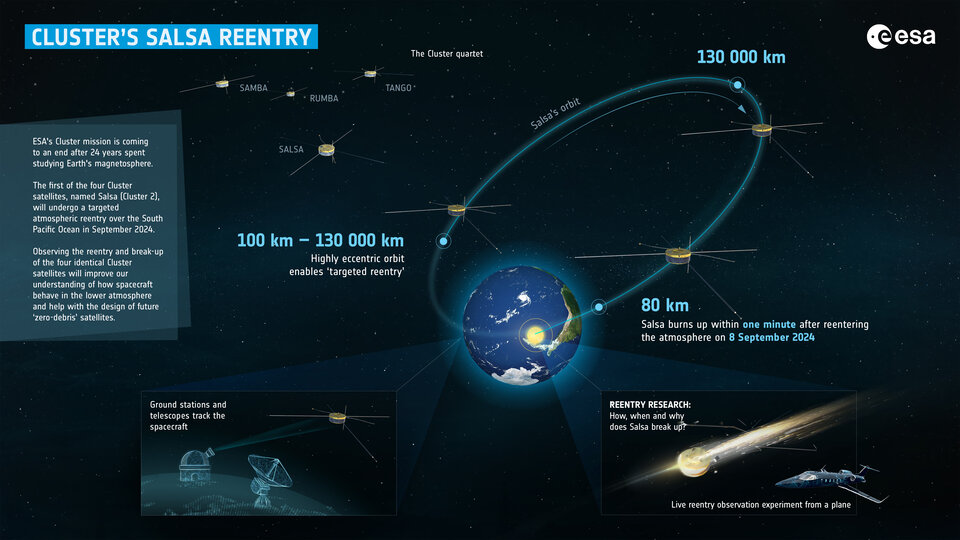The European Space Agency (ESA) is gearing up for a rare study of a live
satellite reentry, which is set to take place next month. The focus is on
one of the four satellites from the ESA’s Cluster constellation,
launched in 2000, to investigate solar winds and their effects on
Earth’s atmosphere. The satellite, named...
The post ESA Sends a Plane To Observe Old Satellite Reentry Live in a
Groundbreaking Experiment appeared first on Orbital Today.
https://orbitaltoday.com/2024/08/28/esa-to-study-salsa-satellite-reentry/View article
View summary
#^ESA Sends a Plane To Observe Old Satellite Reentry Live in a Groundbreaking ExperimentThe European Space Agency (ESA) is gearing up for a rare study of a live
satellite reentry, which is set to take place next month. The focus is on one of the four satellites from the ESA’s Cluster constellation, launched in 2000, to investigate solar winds and their effects on Earth’s atmosphere.
The satellite, named Salsa, will retire and reenter Earth’s atmosphere on 8 September, burning up as it descends over the South Pacific Ocean.
The Last Dance of Salsa Satellite And Epic Reentry
The ESA will deploy a plane equipped with over 20 scientific instruments and a team of scientists to gather data on the reentry process. The mission aims to capture rare data on how and when a satellite disintegrates during reentry, which could help improve future satellite safety measures and sustainability.
Observations will include tracking the satellite’s fiery descent, potential explosions, and any debris that survives reentry.

How Cluster’s reentry works. Credit: ESA
Implications for SpaceX’s Starlink Network
This research is particularly relevant for
SpaceX’s Starlink, which has launched nearly 7,000 satellites into orbit. While Starlink satellites are designed to burn up completely during reentry, concerns remain about the risks of falling debris and potential chemical emissions that could affect the ozone layer.
In 2022, the ESA estimated a minor, short-term impact on the ozone from a single spacecraft’s demise but stressed the need for further data to improve these assessments.
Future Plans for Satellite Reentry Studies
Following the observation of Salsa’s reentry, the ESA plans to track the reentry of the remaining three satellites from the Cluster constellation, set to return to Earth in 2025 and 2026. This will allow scientists to conduct a repeatable experiment, providing further insights into the satellite reentry process and refining predictive models for future space missions.
The post
ESA Sends a Plane To Observe Old Satellite Reentry Live in a Groundbreaking Experiment appeared first on
Orbital Today.